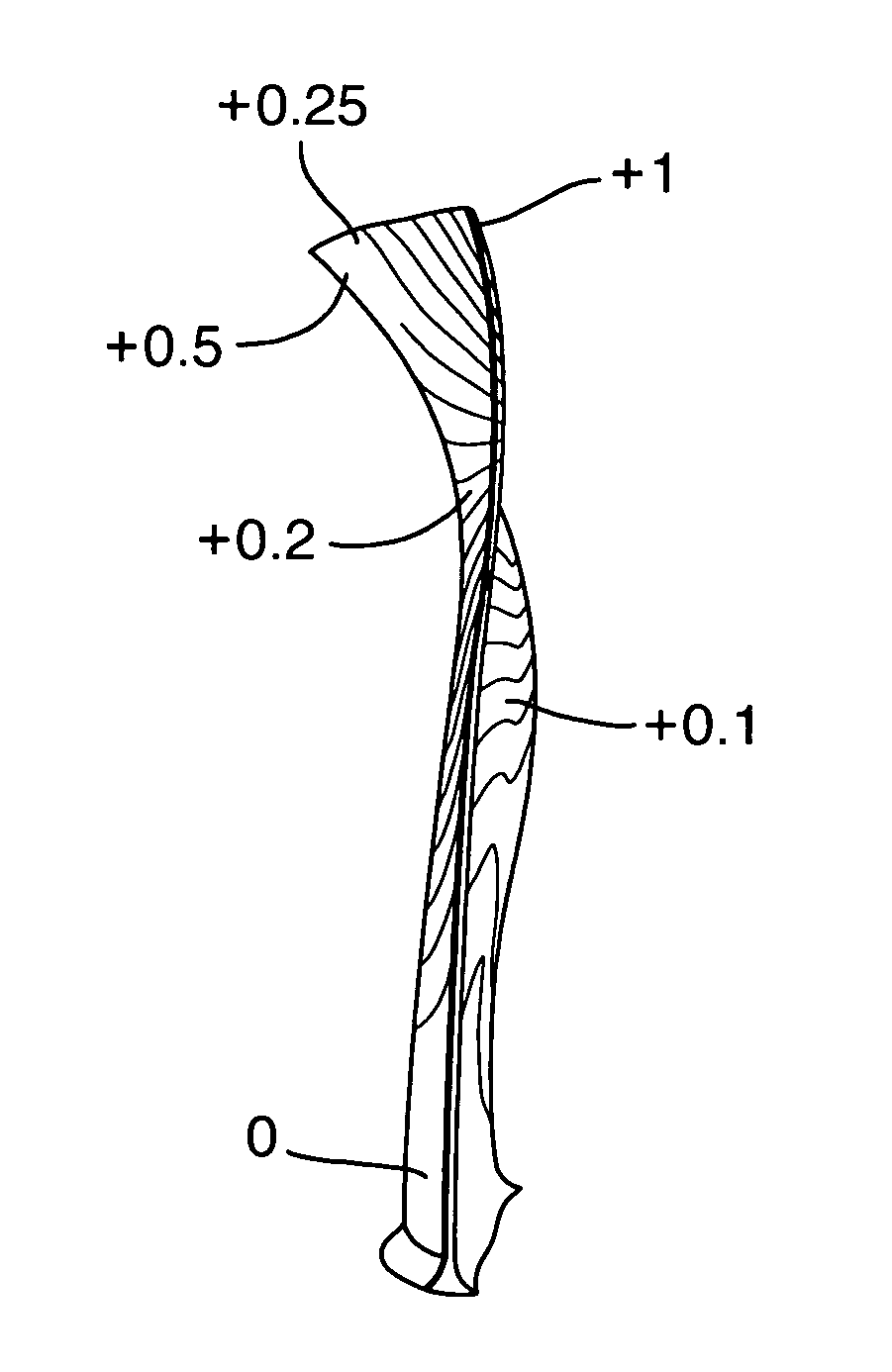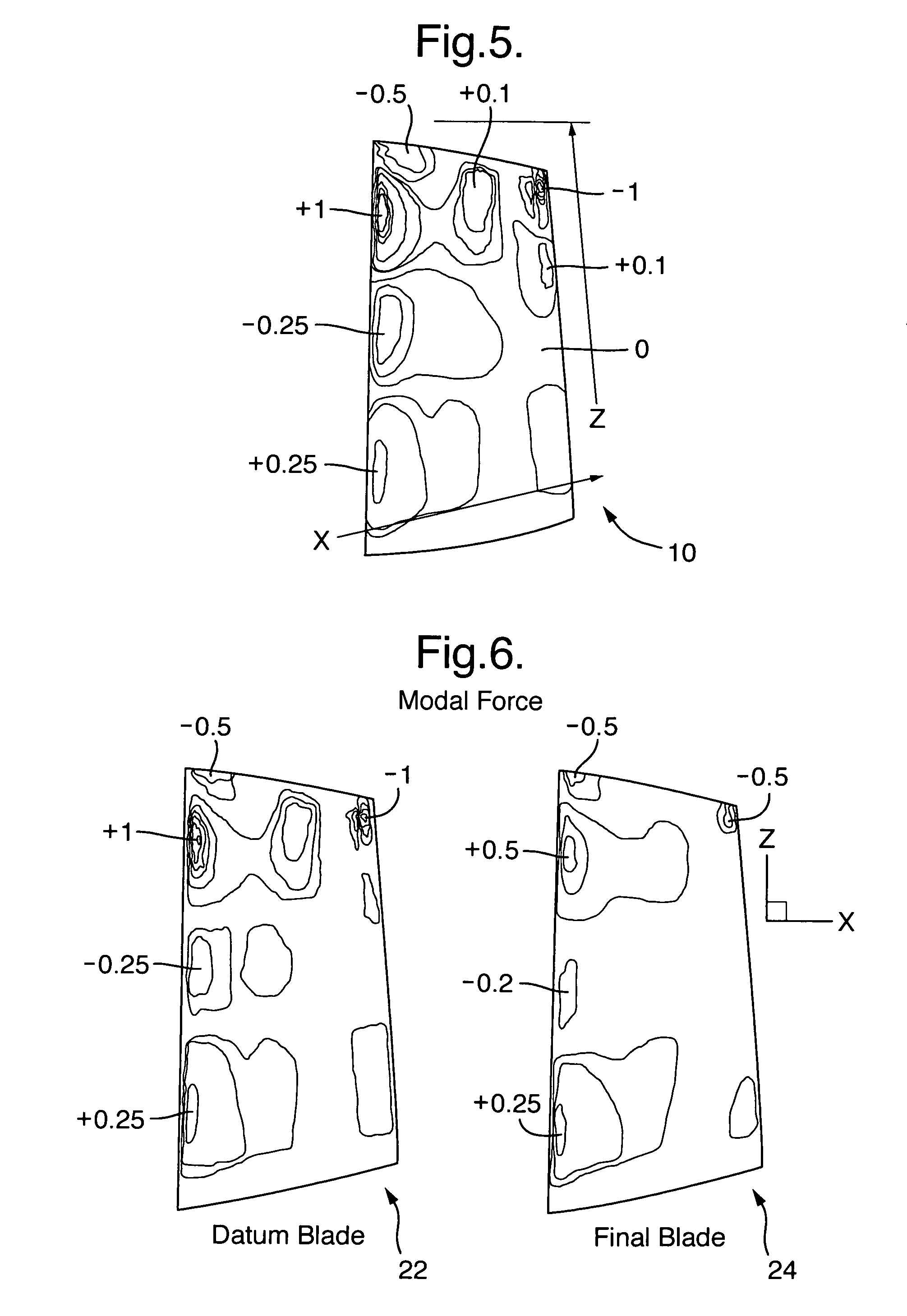Vanes for exposure to vibratory loading
a technology of vibratory loading and vanes, which is applied in the direction of computer aided design, special data processing applications, liquid fuel engine components, etc., can solve the problems of blade failure, unsteady aerodynamic forces, and typical high frequency vibration of vanes
- Summary
- Abstract
- Description
- Claims
- Application Information
AI Technical Summary
Benefits of technology
Problems solved by technology
Method used
Image
Examples
Embodiment Construction
[0077]The following embodiments will be described with reference to a blade, in particular to a compressor blade of an aero engine. One such blade is shown schematically in FIGS. 1 and 2.
[0078]FIG. 1 shows a drawing of a blade in a non-deformed state. This shape is assumed by this blade when no steady state or vibrational load is applied to the blade. FIG. 2 shows a drawing of the same blade as FIG. 1. However, FIG. 2 shows an instantaneous shape of the blade which is different to that of FIG. 1. In FIG. 2, the blade is deformed due to a vibrational load. A measure of deformation of local elements of the blade is given by the displacement of each local element with respect to the position of the same local element in its non-deformed state. In FIG. 2, the shaded contours indicate lines of equal displacement. The values shown are normalised between 0 and 1. It can be seen that one corner tip of the blade has a significantly higher normalised displacement than the remainder of the bla...
PUM
 Login to View More
Login to View More Abstract
Description
Claims
Application Information
 Login to View More
Login to View More - R&D
- Intellectual Property
- Life Sciences
- Materials
- Tech Scout
- Unparalleled Data Quality
- Higher Quality Content
- 60% Fewer Hallucinations
Browse by: Latest US Patents, China's latest patents, Technical Efficacy Thesaurus, Application Domain, Technology Topic, Popular Technical Reports.
© 2025 PatSnap. All rights reserved.Legal|Privacy policy|Modern Slavery Act Transparency Statement|Sitemap|About US| Contact US: help@patsnap.com



